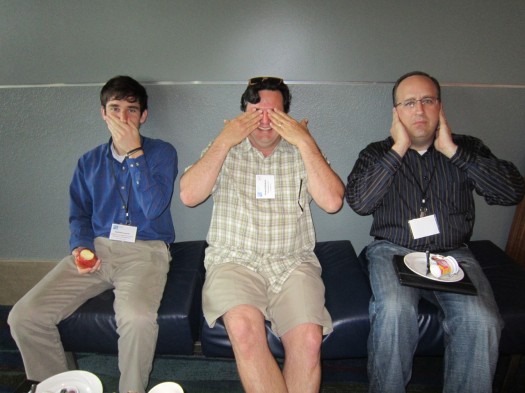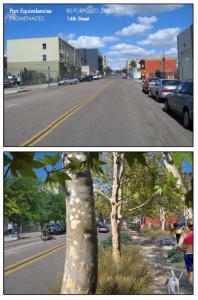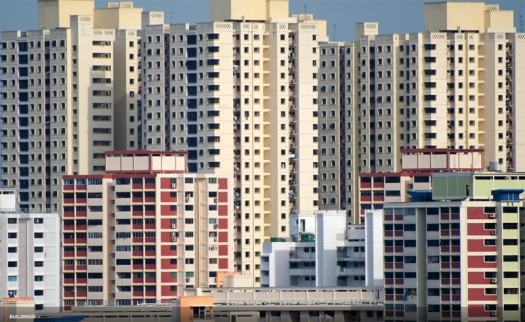A Placemaking Journal
Homelessness: Testing the boundaries of “health, safety and welfare”
Homelessness is an everyday issue that gets a little additional attention during the holidays. A recent HUD report estimated that, on a single night, 633,782 people are homeless across the United States. What surprised me and others, however, was the fact that, after New York and Los Angeles, it’s San Diego, our 8th largest city (and my hometown), that has the country’s third highest number of homeless. And a too high percentage of them are military veterans.
A complex social issue, I am admittedly not an expert on homelessness. However, with it being a complex “health, safety and welfare” issue, urban designers, planners, landscape architects and architects are positioned to assist politicians and citizens on a rational dialog and design response to our cities’ needs. So, this blog is an attempt to assist with the recently stated goal of our new Mayor, Bob Filner, and City Council President, Todd Gloria: “To end homelessness in downtown… in the next four years.”

San Diego’s downtown redevelopment has created a tight conflict zone between new, East Village mixed-use blocks and our many homeless who depend on food and shelter from Father Joe’s Villages, Southern California’s largest homeless services provider. This conflict plays out in full view, whereby homelessness exists not as a hidden community but, rather, as lives and circumstances visible and demanding of attention. As a practicing New Urbanist committed to the ideal that neighborhoods should offer a place for everything and everything in its place, these are my initial thoughts:
Define the Different Types of People
Homelessness is typically described in terms of time spent without a home. The chronically homeless are often the mentally ill, living without housing or support for long-periods of time voluntarily. Second, the cyclical homeless, are those that drop in and out of homelessness, often in association with drug addiction, crime and mental health issues. Finally, the transitional homeless, those who are forced onto the streets due to mostly economic circumstances such as loss of a job, stable home, spouse, family support or financial benefactor. The support services needed to address these three types are different, and should be provided at regional, city-wide and neighborhood scales to diffuse the equitability issue of some neighborhoods bearing the brunt of this larger social issue.
Define the Different Types of Places
As defined above, we have those in need of shelter and access to resources to transition back to homes and jobs (community-scale, usually managed by food banks, non-government organizations, and churches); those in need of health care and places to deal with the problems associated with addiction and criminal activity (city-wide scale, typically managed by police and hospitals); and those clearly in need of long-term health care (regional scale, usually County health agencies). I believe we have a few opportunities right now to address homelessness and cultural change needs at the neighborhood-scale.

Bathrooms: A city manages the public realm, our streets and parks. With our cities returning to a walkable and bikeable scale, access to public restrooms is necessary again. As a matter of personal need, as well as safety, we need to design for the needs of women, children, and the elderly, providing all of us using public spaces with a sense of sanitary dignity. The standard bathroom, with its private stalls, sinks, and toilets, provides private sanitary services for homeless at the expense of the general public’s use. In response to the rise of homelessness, our cities have closed public restrooms. Plus, we are still designing major plazas and parks and trying to balance the needs of all public users (homeless and those with homes) project-by-project. I recommend that communities have a public restroom Master Plan that provides for sanitary services for all types of people in all types of public spaces.
Recycling Centers: San Diego’s recycling program is rudimentary at best, and a large number of homeless make their living by ‘canning.’ Being honest that private recycling centers in San Diego’s East Village serve as essential job centers for the homeless may assist in how we plan around our different social services. Public/private partnerships with recycling centers can allow such places to serve as work centers that assist people into homes and jobs.
Libraries: Our handheld, internet-based technology has changed the role of libraries in our communities. As with bathrooms, I believe we need different types of libraries for different types of needs. Before we close down another library, we should consider repurposing it to provide after-school or summer youth programs to assist with the working poor. If they further provided additional transitional homeless services, libraries would be able to access additional funds to maintain their traditional services. The balance is to maintain the libraries’ appeal to all families and avoid becoming full-time shelters. And I should put post offices, with their continued closures, on this list too.
Shelters: Operating predominately as public/private partnerships, churches and NGO’s typically partner with agencies to provide a variety of shelters for those in transition. From the HUD report, it seems that the smaller the city the more its homeless are sheltered and not on the streets. Coordination and management of these facilities is of great importance to each neighborhood in a city and might be the right scale to provide such. This recent Denver Post article provides a glimpse of the possibilities.

Affordable Housing: This gets more difficult the more I write, so I will end today’s blog on the note of needing to regionally plan for a network of neighborhood-scaled housing solutions. At its core, homelessness is defined by the absence of shelter, not by the absence of place. Its populations do have homes in the broader sense, in that they live each day as de facto members of our communities.The more we’re able to plan for assisting them where they are, acknowledging them as neighbors rather than as interlopers, the less continued conflicts we will endure.
What are your thoughts? What success stories have you seen at the neighborhood scale?
–Howard Blackson
If PlaceShakers is our soapbox, our Facebook page is where we step down, grab a drink and enjoy a little conversation. Looking for a heads-up on the latest community-building news and perspective from around the web? Click through and “Like” us and we’ll keep you in the loop.








